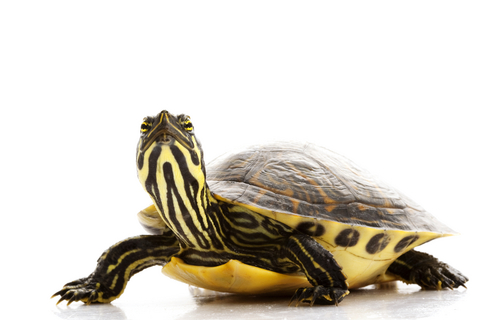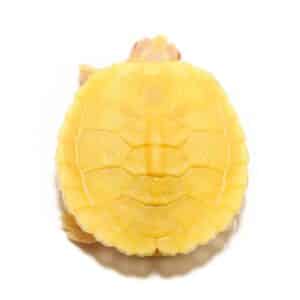Subtotal: $135.00
Camouflage Yellow Bellied Sliders
$350.00 $300.00
A completely new Yellow Belly color morph ! Camouflage Yellow Bellies Sliders come from three generations of very different looking dark, gold and black Yellow Bellied Sliders
yellow belly slider for sale near me
Camouflage Yellow Bellied Sliders bred for the sharpest and brightest golds and blacks. The standard Yellow Belly green is all but gone – and their intricate patterns look more like an army camouflage than anything else. yellow belly slider for sale near me
In another generation, look for Albino Camouflage Yellow Bellies – only at The Turtle Source…
Behavioral Characteristics
These turtles are semiaquatic and are one of the most abundant of all basking turtle species. They are seen resting on logs, stumps or rocks, individually or in groups, during fall and spring, or at any time when the weather is dull or mild, and the sun is out. They communicate with each other by means of touch and vibrations, and have very good eyesight.
These turtles have the habit of stacking on top of each other by the pond side. They are diurnal and usually spend the night sleeping underwater. However, they are also seen floating on the water surface. Camouflage Yellow Bellied Sliders
The Yellow-Bellied Slider is a subspecies of the pond turtle and is native to parts of the US. It is the most common turtle in its range and is very much popular as an aquarium pet. Yellow-bellied slides are often confused with the red-eared sliders, which have red or orange stripes down the sides of their heads unlike the former, since they both have features in common, as also, share their natural range.
Yellow-Bellied Slider Scientific Classification
| Animalia | |
| Chordata | |
| Reptilia | |
| Testudines | |
| Emydidae | |
| Trachemys | |
| Trachemys scripta scripta |
Physical Description
Size: A healthy, adult male typically reaches 5 to 9 inches (13 to 23 cm) in length, while a full-grown female of the species is larger measuring 8 to 13 inches (20 to 33 cm).
Weight: They have a very light mass. On average, they weigh between 7.7 and 13.8 g.
Carapace & Body Color: The shell of this terrapin has a typical brown and black coloration, often bearing bright yellow stripes, while the skin has an olive green color with distinct yellow patches down the legs and neck region.
Sexual Dimorphism: There are no visible differences between the sexes except that the males naturally bear claws, and are smaller than the females (mentioned above).
Lifespan
In the wild, the turtle can live for up to a maximum of 30 years, whereas the captive longevity of this species is more than 40 years
Distribution
The reptile is native to the southeastern parts of the US, particularly from Florida to southeastern regions of Virginia.
Habitat
Yellow-bellied sliders mostly prefer still water bodies like ponds and are found in slow-moving rivers, marshes, floodplain swamps, etc. and frequently colonizes seasonal wetlands like Carolina bays. Except for terrestrial excursions, these reptiles mostly remain in water bodies where submerged and floating vegetation is abundant.
Behavioral Characteristics
These turtles are semiaquatic and are one of the most abundant of all basking turtle species. They are seen resting on logs, stumps or rocks, individually or in groups, during fall and spring, or at any time when the weather is dull or mild, and the sun is out. They communicate with each other by means of touch and vibrations, and have very good eyesight.
These turtles have the habit of stacking on top of each other by the pond side. They are diurnal and usually spend the night sleeping underwater. However, they are also seen floating on the water surface.
During winter, when the temperature goes down, they usually become inactive. Their activity level goes down, especially when the temperatures go down below 10° C.
They will usually hibernate between November and February often underwater, under the banks of ponds, hollow stumps, etc., and come out between early March and late April.
While they prefer staying mostly in the water, they would move on land at times to lay eggs in a terrestrial nest, or to and from their hibernation sites. They are otherwise gentle-natured; however, males are sometimes aggressive towards each other during the mating season.
Diet
These reptiles are omnivorous and feed on both plant and animal matters, including insects, dead fish, tadpoles, aquatic crustaceans, and other meat items. Plant matters in their food list include fruits, seeds, leaves, stems, roots, and algae. However, they tend to be more carnivorous with their diet consisting of 70% of animal matters and 30% plant matters.
Reproduction & Life Cycle
The mating season of this slider is spring when the male yellow-bellied sliders have been observed displaying courtship behavior by performing a specific mating dance.
After mating the female yellow-bellied sliders begin building their nest cavities by digging soil using the rear feet where they lay their eggs soon after.
The litter size (number of eggs) varies between individual, because it’s be influenced by factors like body size and age.
It takes about three months for the baby turtles to hatch out.
The hatchlings stay in their nests during fall and winter and emerge in the next spring, after which they enter the water for the first time to begin feeding.
The young sliders attain the age of sexual maturity when they are around 4 to 5½ inches in length.
Adaptations
- They have the ability to inflate their throats to keep themselves floating.
- The brown and olive coloration, as also the bizarre and bright pattern on the carapace of the turtle, create a visual paradox that helps them camouflage among the grasses, as well as other land and floating vegetation.
Predators
In the wild, the primary enemies of the yellow-bellied sliders are raccoons, striped skunks, Virginia opossums, and red foxes.
Conservation Status
Considering their static population and growth rate, the IUCN 2.3 has enlisted them as ‘LC’ (Least Concern).
-
yellow belly slider for sale near me,
-
northern red bellied turtle for sale,
-
emerald red eared slider for sale,
-
2 headed turtles for sale,
-
charcoal red eared slider,
-
red eared slider morphs,
-
yellow belly slider for sale near me,
-
northern red bellied turtle for sale,
-
emerald red eared slider for sale,
-
2 headed turtles for sale,
-
charcoal red eared slider,
-
red eared slider morphs,

 European Pond Turtle
European Pond Turtle 




























Theodore –
They were what I what waited for
they are having fun in there pond
RolandZooli –
He’s very healthy still getting use to his new home. But we love him.